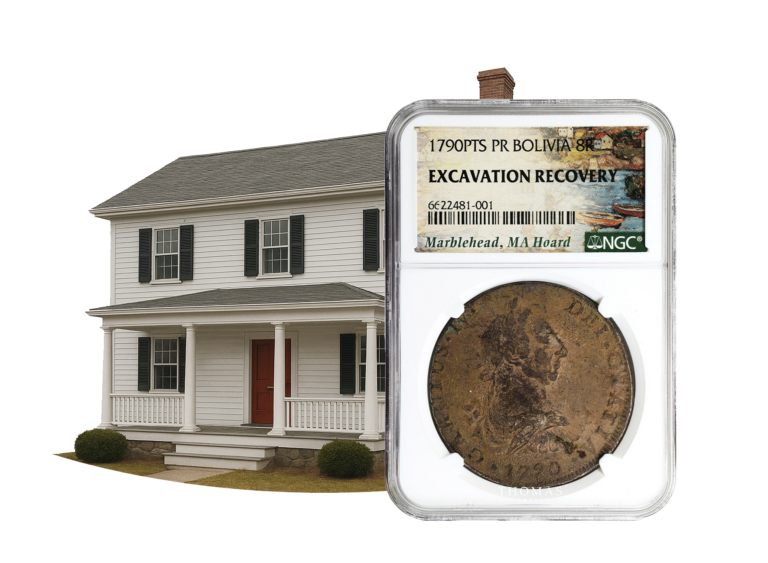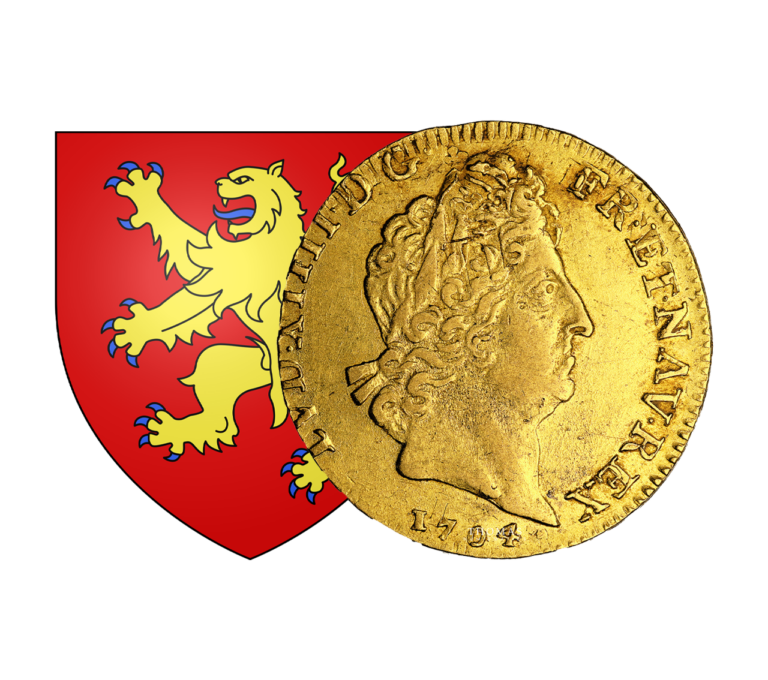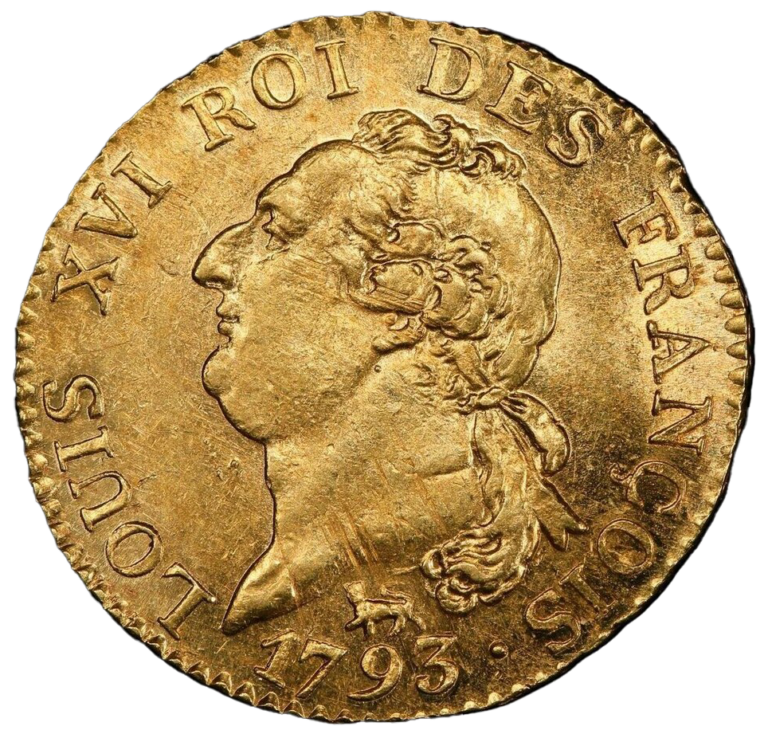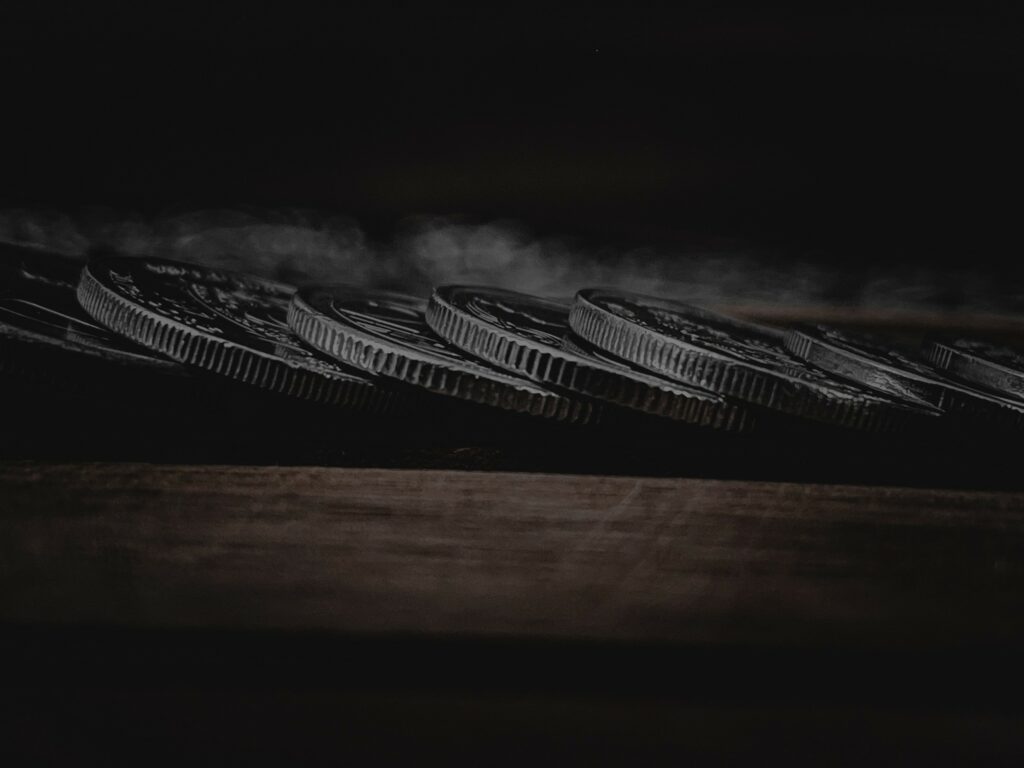
Discover all the news and articles from TNUMIS Magazine exclusively
The Hundred Years War Treasure
The Hundred Years’ War, that long and tumultuous conflict between France and England, has not only left its mark on the annals of history. Even today, its echoes echo beneath our feet, in buried treasures, forgotten artifacts and relics of a tumultuous past. These fascinating discoveries tell a story that’s very much alive. Through these rediscovered treasures, a door to the Middle Ages opens, revealing the secrets of a time of conflict, resilience and profound transformation. In this article, we take a look at the greatest treasure of the 100 Years’ War, the Lucerne Treasure.
The Hundred Years War
The Hundred Years’ War (1337-1453) was a major conflict between the kingdoms of France and England, marked by dynastic and territorial conflicts. It began when the English king Edward III claimed the throne of France after the death of the French king Charles IV, for want of a direct heir.
The conflict was divided into several phases, alternating between open warfare and truces. The English won famous victories, such as those at Crécy (1346), Poitiers (1356) and Azincourt (1415), thanks to their military superiority, particularly with archers. However, the French, bolstered by military reforms and the inspiration of figures such as Joan of Arc, gradually regained the upper hand, notably at the siege of Orleans (1429).
The war ended in 1453 with the French victory at Castillon, consolidating France’s control over almost the entire territory, with the exception of Calais. The war marked the end of English influence in France and the beginning of the assertion of the French nation-state.
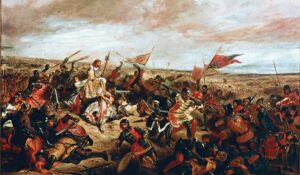
Looting and hidden treasures
As in most military conflicts of the time, the armies of the 100 Years’ War, particularly the English and French, practiced systematic looting to finance their campaigns. Captured towns, abbeys and castles were often stripped of their treasures: jewels, gold coins, silver and other precious objects.
To avoid looting, noble families and communities buried or hid their possessions.
Churches and abbeys were repositories of hidden treasures, some of which have never been found and are the stuff of local legends.
Treasures of the 100 Years War
There are many treasures that can be attributed to the 100 Years’ War, including the following:
The medieval Trésor des Terreaux, discovered in 1993 during construction of a parking lot.
The Lussac treasure, discovered by a resident of Lussac-les-Châteaux and donated to his commune, consists of 184 medieval silver coins.
The treasure of Oissel, discovered in 2012 by a private individual on his land, consisting of 941 silver coins and two gold agnel. The treasure was subsequently exhibited in the Musée des antiquités in Rouen.
And the one we’re particularly interested in, the Lucerne Abbey Treasure.

Lucerne Abbey
The Abbey of La Lucerne, located in Normandy (in the Manche département), is an abbey of the Prémontré order founded in 1143 by Hasculphe de Subligny, a local lord. It was established to house the canons regular of the Prémontré order, a religious community following the rule of Saint Augustine.
La Lucerne Abbey is a fine example of Norman Romanesque and Gothic architecture, and its history reflects the religious, political and social transformations of France.
Key points in its history :
• Middle Ages: The abbey enjoyed a period of prosperity, playing a spiritual and economic role in the region. It owned land and seigneurial rights, and supported charitable works.
• Hundred Years’ War: Like many religious buildings, the abbey suffered destruction and looting. It was partially ruined.
• Renaissance: The abbey is restored and resumes its activities, but gradually declines.
• French Revolution: In 1790, the church was sold as national property, marking the end of its religious role. The buildings fell into ruin.
• Modern restoration: From 1959 onwards, the abbey was saved thanks to the Abbé Marcel Lelégard, who initiated a restoration campaign. Today, it is a historic site open to the public.
• Lucerne Treasure: Between 1968 and 1970, 2,665 medieval gold coins were discovered in metal and terracotta pots.
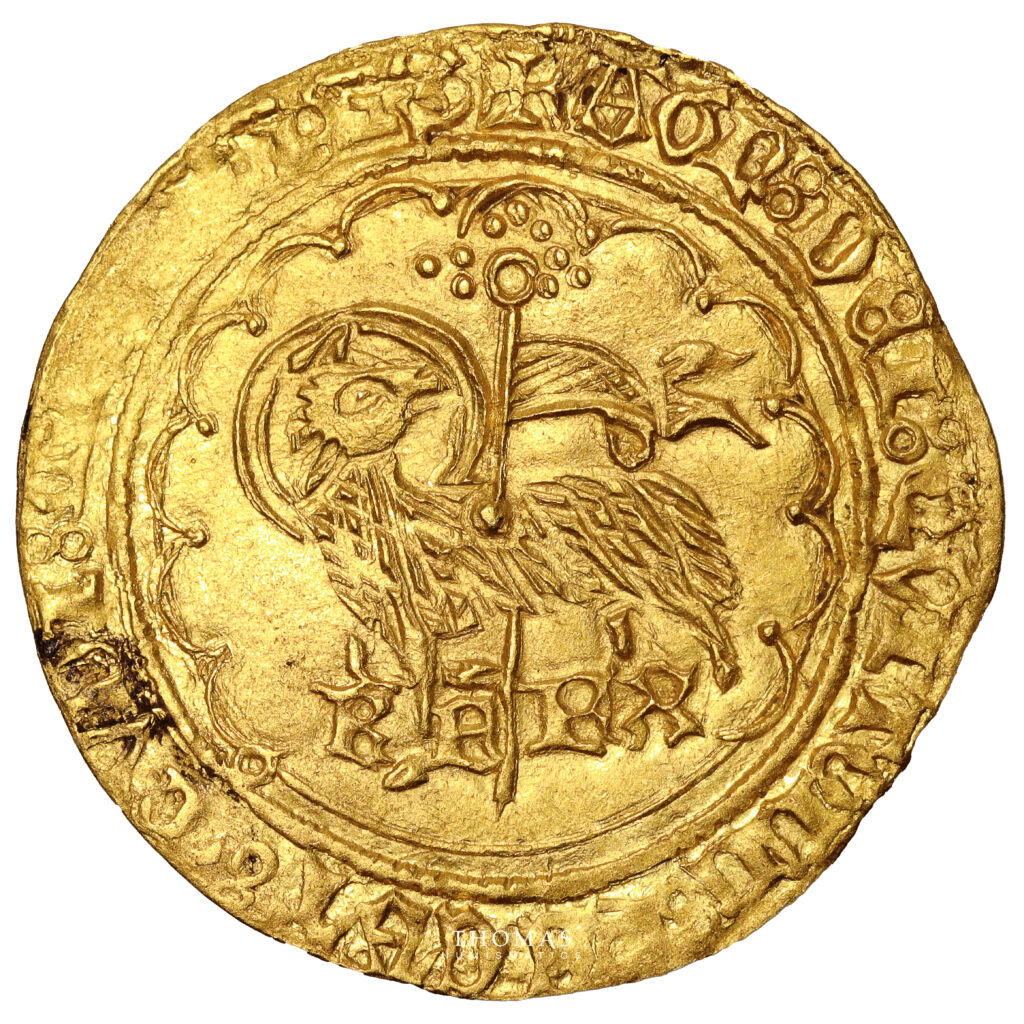
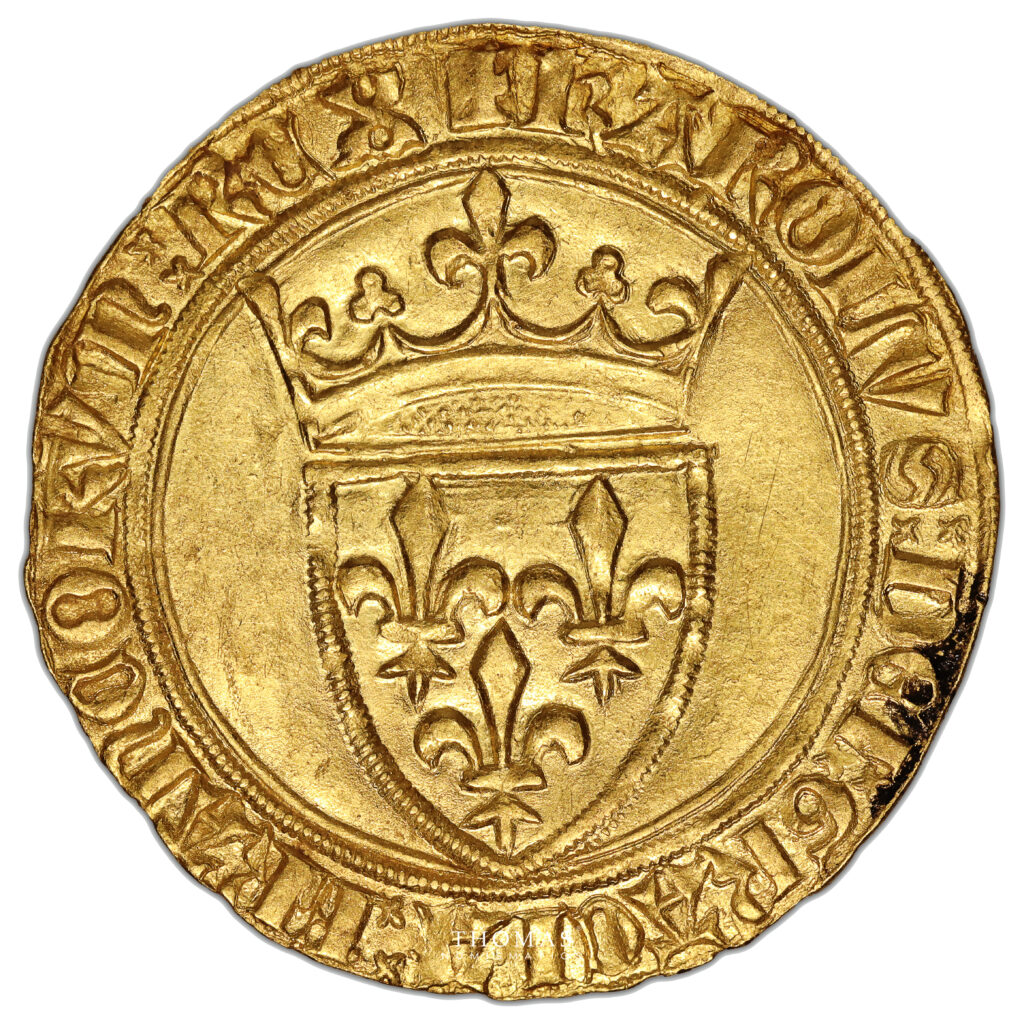
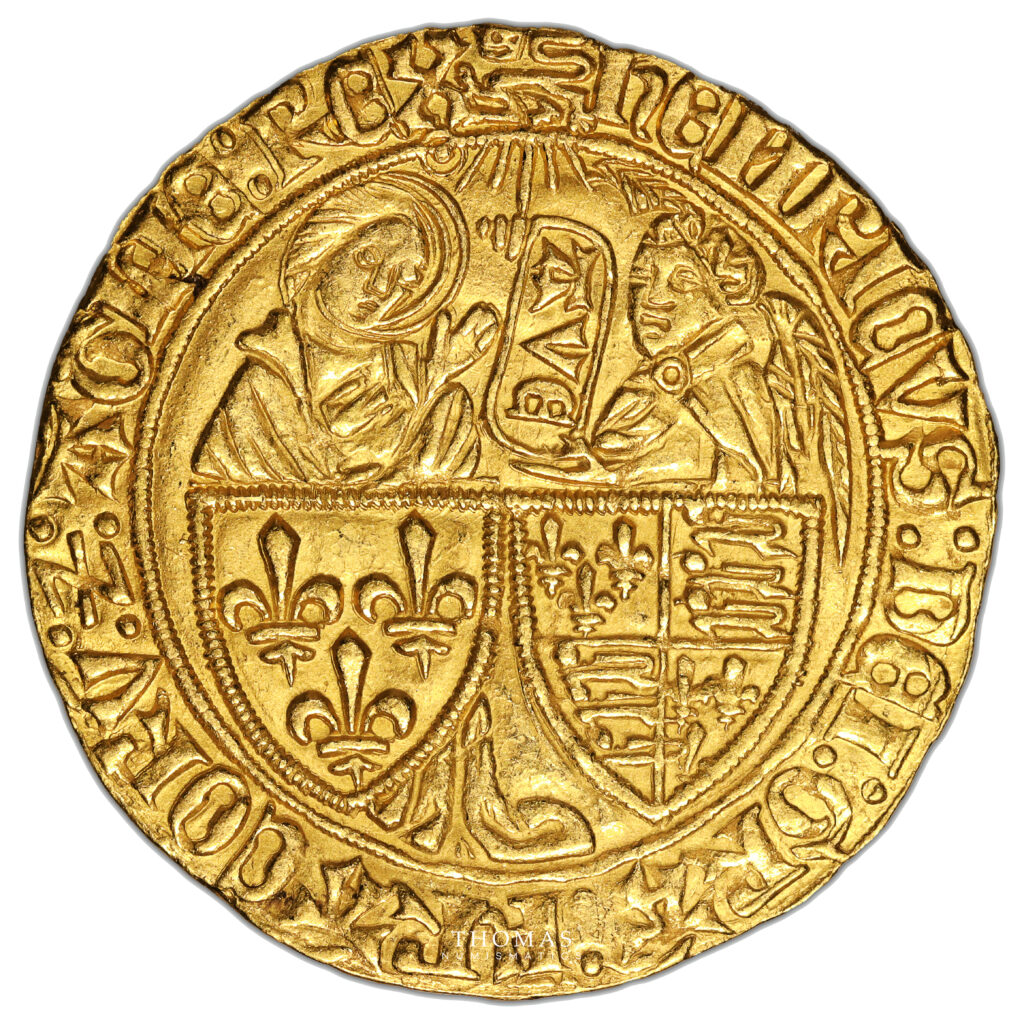
The Treasure of Lucerne Abbey
The 2,665 gold coins discovered between 1968 and 1970 during restoration work constitute the largest treasure of the 100 Years’ War.
Composed of French royal gold coins ( écu d’or , franc a pied , agnel d’or , demi-heame d’or … ), Anglo-French ( Salut d’or … ) and British ( Noble d’or … ), as well as feudal coins from Brittany ( Cavalier d’or … ) and other provinces covering the period from Philippe VI de Valois to Charles VI, the treasure was partially sold under the name “ Trésor de la Guerre de 100 ans ” with 3 famous auctions in December 2005 , April 2006 and June 2009 by auctioneers Baussant Lefèvre and expert Thierry Parsy.
Sales helped finance the restoration of the abbey, and some of Gold écu were purchased and exhibited at the Musée des Beaux-Arts in Saint-Lô.
The coins in this treasure are highly sought-after by collectors, not only for their rarity but also for their history.
Sources :
